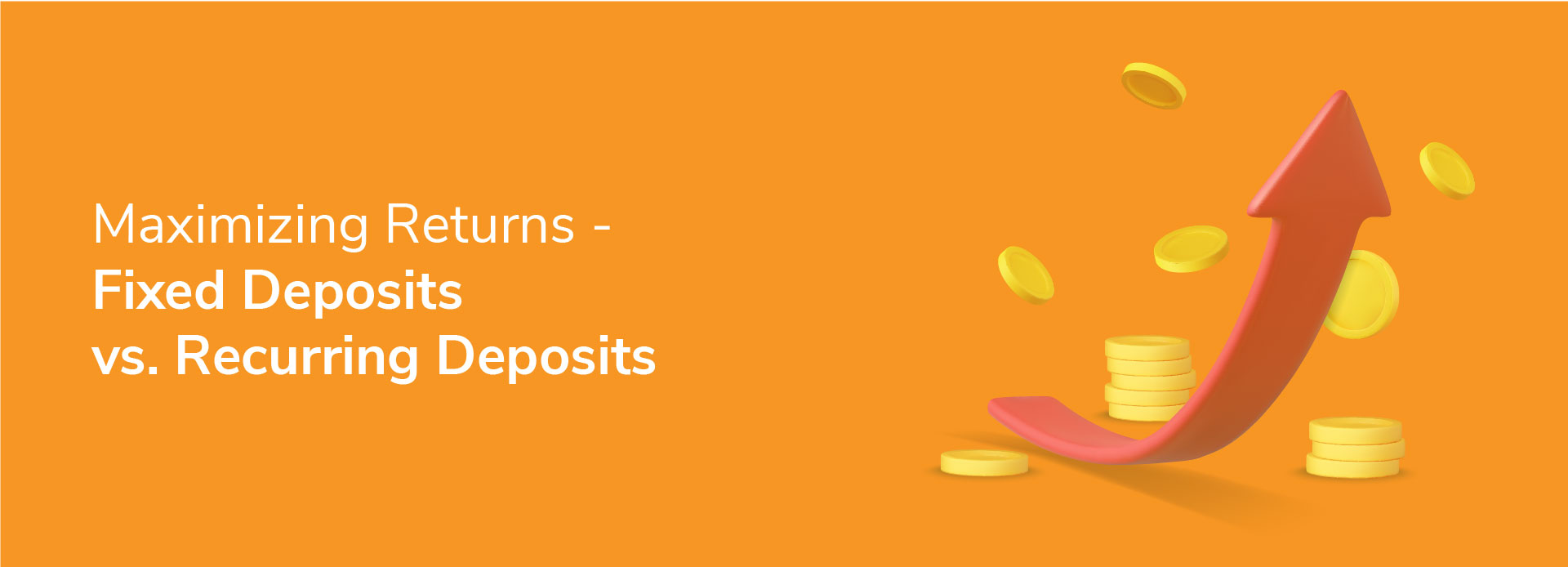
Maximising Returns: Choosing Between Fixed Deposits and Recurring Deposits
09 April 2024 | By INDIE
When it comes to conservative investment options, Fixed Deposits (FDs) and Recurring Deposits (RDs) are popular choices for individuals looking to secure stable returns. Both investments offer a safe place for your savings, but they differ in terms of structure and flexibility. In this article, we will explore the characteristics of Fixed Deposits and Recurring Deposits, helping you make an informed decision to maximise returns based on your financial goals and preferences.
Understanding Fixed Deposits
Fixed Deposits are a straightforward investment option where you can deposit a lump sum amount with a financial institution for a fixed tenure at a predetermined interest rate. The fd account interest rate is compounded quarterly or annually, providing a fixed return at maturity. FDs are ideal for those who have a lump sum amount they want to invest without the need for regular contributions.
Key Features of Fixed Deposits
Fixed Interest Rates:
FDs offer a fixed interest rate for the entire tenure of the deposit, providing predictability and stability in returns.
Lump Sum Investment:
You can deposit a one-time lump sum amount into the FD account at the beginning of the tenure.
Flexible Tenure Options:
FDs come with various tenure options, allowing you to choose the duration that aligns with your financial goals.
Interest Payouts:
The interest can be paid out at regular intervals or reinvested to compound over the tenure, depending on your preference.
Understanding Recurring Deposits
Recurring Deposits, however, provide a systematic and disciplined approach to saving. In an RD, you can contribute a fixed amount regularly, usually monthly, for a predetermined tenure. The interest is calculated monthly, providing returns at the end of the tenure.
Key Features of Recurring Deposits
Regular Contributions:
RDs involve making fixed monthly contributions, making it an attractive option for individuals with a steady income.
Systematic Saving:
You can cultivate a savings habit by contributing a fixed amount every month towards the RD account.
Tenure and Interest Calculation:
Like FDs, RDs come with various tenure options, and the interest is typically calculated monthly.
Flexibility in Tenure:
RDs offer flexibility in choosing tenure, allowing you to align it with your savings goals.
Choosing Between Fixed Deposits and Recurring Deposits
Consider these points when deciding which one to choose - FD vs RD -
Financial Goals
Consider your financial goals before deciding between FDs and RDs. If you have a lump sum amount that you can invest upfront, FDs might be more suitable. However, if you prefer systematic and regular contributions, RDs provide a disciplined savings approach.
Risk Tolerance
Both FDs and RDs are low-risk investments. However, if you are looking for a bit more flexibility in withdrawals, FDs might be preferable, as they allow for premature withdrawal with a penalty.
Interest Rates
Compare the interest rates offered by different banks or financial institutions for both FDs and RDs. Sometimes, one might offer more favourable rates than the other, influencing your decision.
Income Stability
Consider your income stability and liquidity needs. If you can afford a lump sum investment without impacting your monthly cash flow, FDs might be more suitable. On the other hand, RDs allow for systematic savings without straining your budget.
Recommended Read: How Is Fixed Deposit Better Than Other Invesments?
INDIE FD
If you are confused between FD vs RD, let us help you. For those seeking appealing fixed deposit rates, consider initiating an FD account with INDIE using the convenient 100% digital 3-step application process. INDIE Fixed Deposit offerings provide competitive interest rates, a variety of flexible tenure options, and the freedom to opt for interest payouts monthly, quarterly, half-yearly, annually, or upon maturity.
To make an informed decision aligned with your financial objectives, carefully analyse the factors mentioned above. The choice between an FD and RD should be based on your individual financial needs, so choose thoughtfully for optimal financial growth.
Conclusion
Maximising returns involves making a well-informed decision based on your financial goals, risk tolerance, and preferences. Fixed Deposits and Recurring Deposits offer distinct advantages, and the choice between the two depends on your individual circumstances. Whether you opt for the lump sum simplicity of Fixed Deposits or the systematic savings approach of Recurring Deposits, both instruments provide a secure avenue for maximising returns while preserving capital.




